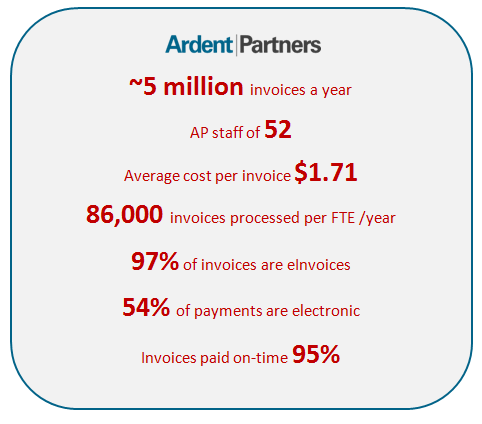Last fall, I attended and presented at the IOFM AP Expo in Las Vegas. The event has grown to become one of the main attractions in the AP space. The speakers and their topics were right on point and made for a very educational event. In fact, it was just announced in December that The Institute Of Finance And Management (IOFM) had acquired The Accounts Payable Network (TAPN) and The Accounts Receivable Network (TARN) – You can read my coverage of this acquisition over on Payables Place in this article, The Institute Of Finance And Management (IOFM) Expands its Presence with an Acquisition
Anyway, I wanted to focus specifically on one presentation that I attended at the event. The reason I’m highlighting this article on CPO Rising is for the benefit of those who are still skeptical about the value of automating the AP process. This presentation was by Andre Hale, Director of AP at Disney, and it highlighted what a Best-in-Class AP operation can look like. The AP group at Disney is part of a larger shared services organization which includes various aspects such as HR, IT, Travel, Financial Services, etc.
Here are a few key metrics from Disney’s AP operation:
Disney’s AP performance puts it far ahead of the average AP department. Just to give you quick idea of how much above the average, according to Ardent’s research (specifically the ePayables 2013: AP’s New Dawn), the cost per invoice for the average enterprise is $13.10 and the number of invoices per FTE / year is approximately 25,000.
Why is Disney doing so much better than its peers? The better question is why do so many AP departments continue to face time, cost and effectiveness challenges? The answer is clear: too much paper. Ardent Partners’ research shows that the average enterprise receives 74% of its invoices in a manual format including paper, PDF, email or fax. Receiving invoices via PDF or email is no better than receiving paper unless a data capture solution is in place to automatically identify, extract and convert data into a digital format. Otherwise the information has to be manually-entered. The remainder (26%) are received in electronic format, which includes eInvoice, PO-flip, EDI / XML or web-portal. By comparison, Disney receive 97% percent of its invoices electronically (‘eInvoices’).
Going forward, Disney’s plan is to continuously improve its operations by becoming more effective users of its technology and, where possible, by transitioning headcount from areas of lower value (e.g., data entry) and transition them to higher value activities like eliminating/reducing exceptions and disputes.
RELATED ARTICLES
ePayables Solutions (Part 1): Scan, Capture, & Workflow

